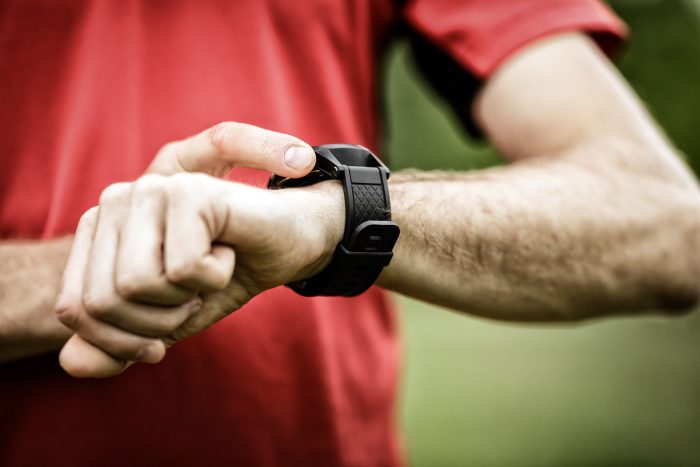Think there’s no time to exercise? Think again!
 With the constant hustle and bustle of modern life, many complain that time is a major factor in why they don’t exercise regularly. Then enters High-Intensity Interval Training (HIIT) programs. HIIT workouts combine brief, intense exercise bursts with periods of rest of the same time or longer.
With the constant hustle and bustle of modern life, many complain that time is a major factor in why they don’t exercise regularly. Then enters High-Intensity Interval Training (HIIT) programs. HIIT workouts combine brief, intense exercise bursts with periods of rest of the same time or longer.
HIIT promises the results of traditional cardio in a fraction of the time but, does it deliver? Research says YES!
Todd Astorino, a professor of kinesiology at California State University – San Marcos, has published a number of papers on the topic. He states: “We now have more than 10 years of data showing HIIT yields pretty much the exact same health and fitness benefits as long-term aerobic exercise, and in some groups or populations, it works better than traditional aerobic exercise.”
A small 2012 study showed that even a reduced-exertion HIT (REHIT) workout done 3 times a week for 6 weeks had a significant impact on improving insulin sensitivity on subjects. Low insulin sensitivity may result in chronically high blood sugar levels, which are thought to increase your risk of many diseases, including diabetes and heart disease. The workout in the 2012 study was only 10 minutes long, start to finish!
In another study, researcher Stephen Boutcher, an associate professor of medical sciences at the University of New South Wales in Australia, says that HIIT can prompt a surge in growth hormones and other organic compounds in the body that serve to “increase fat burning and energy expenditure for hours after exercise.” Among the benefits he found:
- significantly increase both aerobic and anaerobic fitness.
- significantly lowers insulin resistance
- a number of skeletal muscle adaptations produce enhanced skeletal muscle fat oxidation along with improved glucose tolerance.
How can HIIT offer so many benefits?
HIIT researcher and head of the cardiac exercise research group at the Norwegian School of Science and Technology, Ulrik Wisløff, says, “the heart cannot pump enough blood to satisfy all the muscles” during intense exercise. The oxygen deficiency triggers a “cascade of molecular responses in most organs of the body.” This is what gives the improved training response above that is not produced in more “leisurely” exercise.
According to Astorino, regardless if the exercise is mild, moderate or high intensity, it still has an impact on mitochondria—the power generators of the cells. This, in turn, sparks more biological changes related to physical fitness.
Traditional cardio exercises will have this impact as well, but typically require the person to do a longer exercise session to get that response. By contrast, even short bouts of HIIT can start this process.
According to Astorino, the key to HIIT is getting your heart rate above 80% of its maximum. To estimate your maximal heart rate, subtract your age from 220. This is a good guide, but be aware of your body. If you are just starting out, you may need to start out at a lower percentage.
While there are a number of HIIT training programs, you can also DIY HIIT. Astorino gives the examples:
- If you are already in good physical condition, warm up at a low-intensity and then try sprinting for short bursts (30 seconds). Then, walk or jog slowly for 4 minutes.
- If you are overweight, obese or haven’t been exercising regularly, do not sprint! It isn’t necessary and may not be safe for your joints. Rather, try brisk walking on an incline. It will likely be enough to get your heart rate up. In time, you may work up to sprinting.
- Not a walker? No problem! HIIT researcher Wisløff says you can use this concept with biking, swimming, or any other type of cardio.
WHO can do HIIT?
HIIT is safe for most people. Wisløff and colleagues analyzed almost 50,000 hours of HIIT data collected from cardiovascular disease patients in Norway over a 7 year time frame. In all of those records, he found only 2 (non-fatal) cardiac arrests. He adds, “It’s much more dangerous not to perform HIIT than to perform it.” However, as with any exercise program, you should check with your doctor to confirm this is appropriate for your specific health status. This is especially true if you have unstable angina or serious heart issues. Your doctor may advise you to begin with REHIT and work your way up to HIIT.
Don’t let lack of time be a reason to not exercise! Talk to your chiropractor at your next visit about how interval training may be beneficial for you.
REFERENCES:
Markham H. “Don’t Have Time to Exercise? Do This for 10 Minutes” Time (August 10, 2017) http://time.com/4893161/hiit-high-intensity-interval-training-exercise/
Metcalfe, RS., Babraj, JA., Fawkner, S.G. et al. “Towards the minimal amount of exercise for improving metabolic health: beneficial effects of reduced-exertion high-intensity interval training”. Eur J Appl Physiol (2012) 112: 2767. https://doi.org/10.1007/s00421-011-2254-z
Boutcher SH. “High-Intensity Intermittent Exercise and Fat Loss”. Journal of Obesity, vol. 2011, Article ID 868305, 10 pages, 2011. https://doi.org/10.1155/2011/868305.
Weston KS, Wisløff U, Coombes JS. “High-intensity interval training in patients with lifestyle-induced cardiometabolic disease: a systematic review and meta-analysis”. Br J Sports Med 2014;48:1227-1234.
This patient information page is a public service of the Tennessee Chiropractic Association. For specific information concerning your health condition, consult your chiropractor. You may find a doctor near you here.